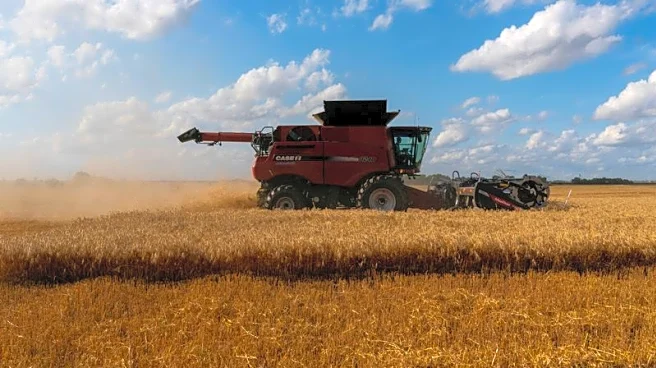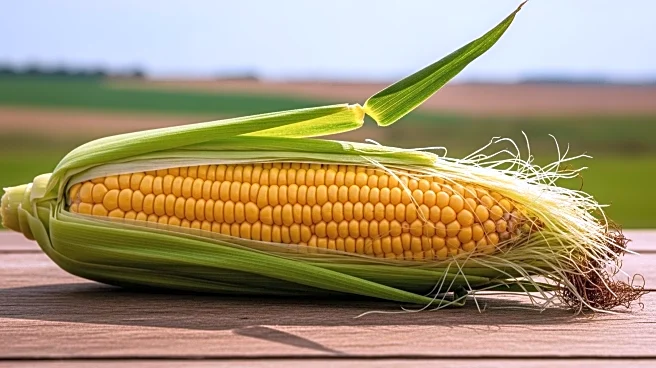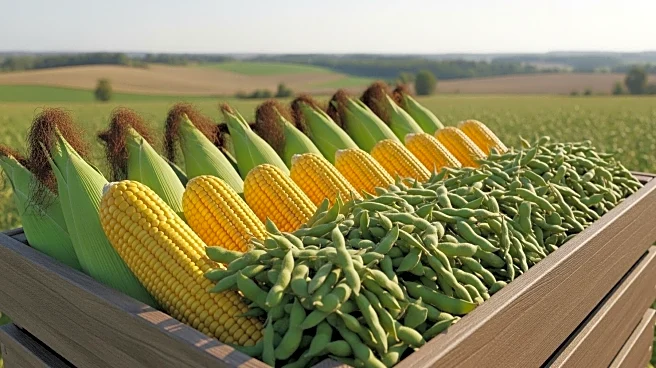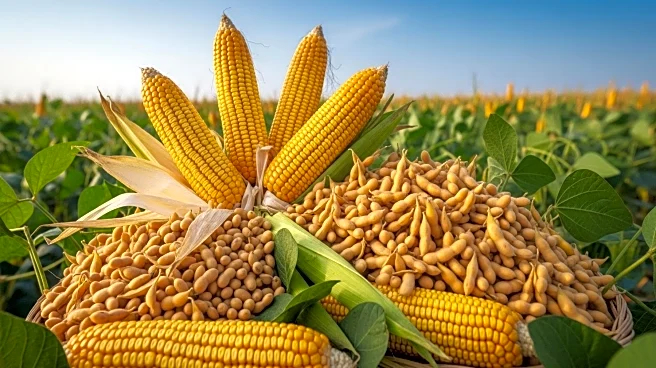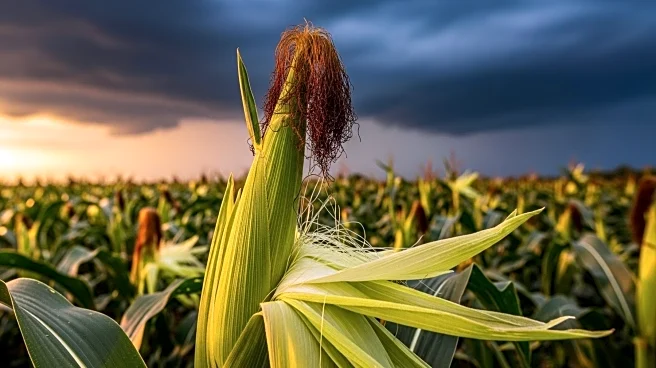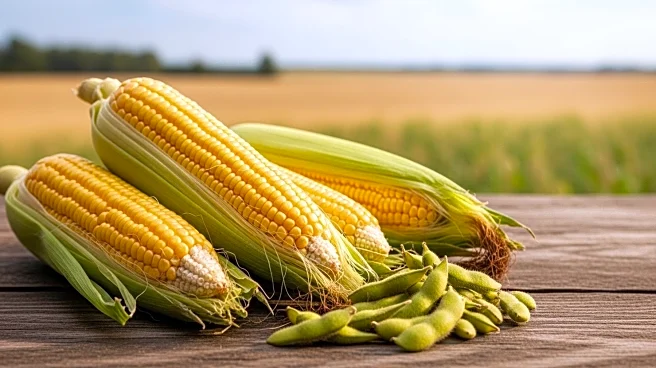What's Happening?
The United States Department of Agriculture (USDA) has raised its forecast for U.S. corn production for the 2025/2026 marketing year, which began on September 1. The new projection estimates production at 16.814 billion bushels, with a yield of 186.7 bushels per acre. These figures, if realized, would set new records. The USDA's previous forecast was slightly lower, at 16.742 billion bushels with a yield of 188.8 bushels per acre. This adjustment comes despite expectations from analysts, who had anticipated a reduction in forecasts due to dry weather conditions in the Midwest. The USDA also increased its outlook for harvested acres from 88.7 million to 90 million. In response to these developments, corn futures fell by 4½ cents to $4.25¼ a bushel on the Chicago Board of Trade. Soybean production forecasts were also adjusted, with a slight increase to 4.301 billion bushels, while soybean futures saw a decrease in price.
Why It's Important?
The USDA's revised forecast has significant implications for the agricultural sector and commodity markets. The increase in projected corn production suggests a potential oversupply, which could lead to lower prices and impact farmers' revenues. This development is particularly crucial for stakeholders in the agricultural industry, including farmers, traders, and investors, as it affects market dynamics and pricing strategies. The bearish stance taken by speculators on soybean futures further indicates a cautious outlook on agricultural commodities, potentially influencing investment decisions and market behavior. Additionally, the USDA's report provides critical data for policymakers and industry leaders to assess the agricultural economy's health and make informed decisions.
What's Next?
Market participants will closely monitor weather conditions in the Midwest, as any changes could impact future production forecasts and market prices. The USDA's next monthly supply and demand report will be eagerly anticipated for further insights into crop conditions and potential adjustments to production estimates. Traders and investors will also keep an eye on the Commodity Futures Trading Commission's weekly Commitment of Traders report for shifts in market sentiment and speculative positions. These developments will play a crucial role in shaping the agricultural market landscape in the coming months.
Beyond the Headlines
The USDA's forecast adjustments highlight the challenges of predicting agricultural output amid changing weather patterns and climate conditions. This situation underscores the importance of adaptive strategies and technologies in agriculture to mitigate risks and enhance productivity. The potential for increased volatility in commodity markets also raises questions about the resilience of supply chains and the need for robust risk management practices.

